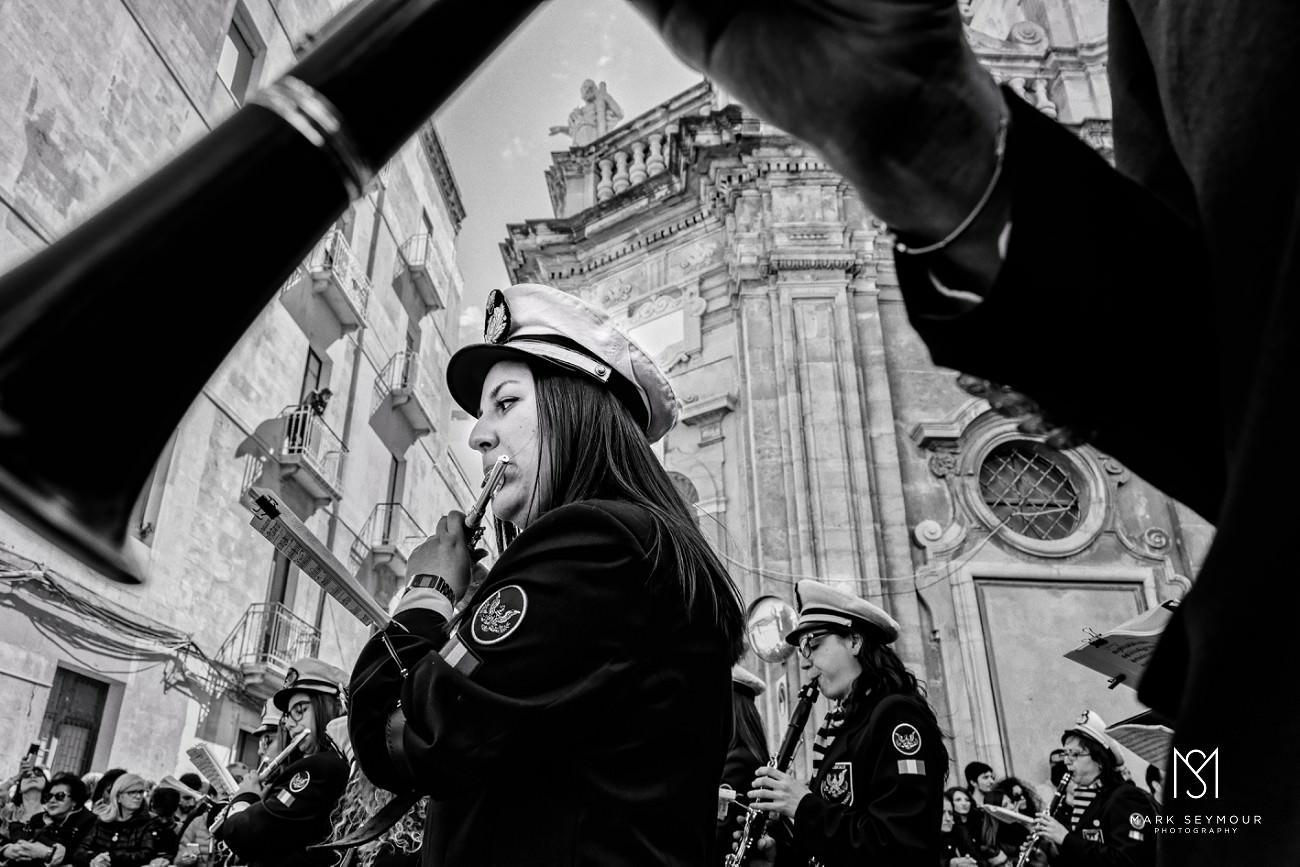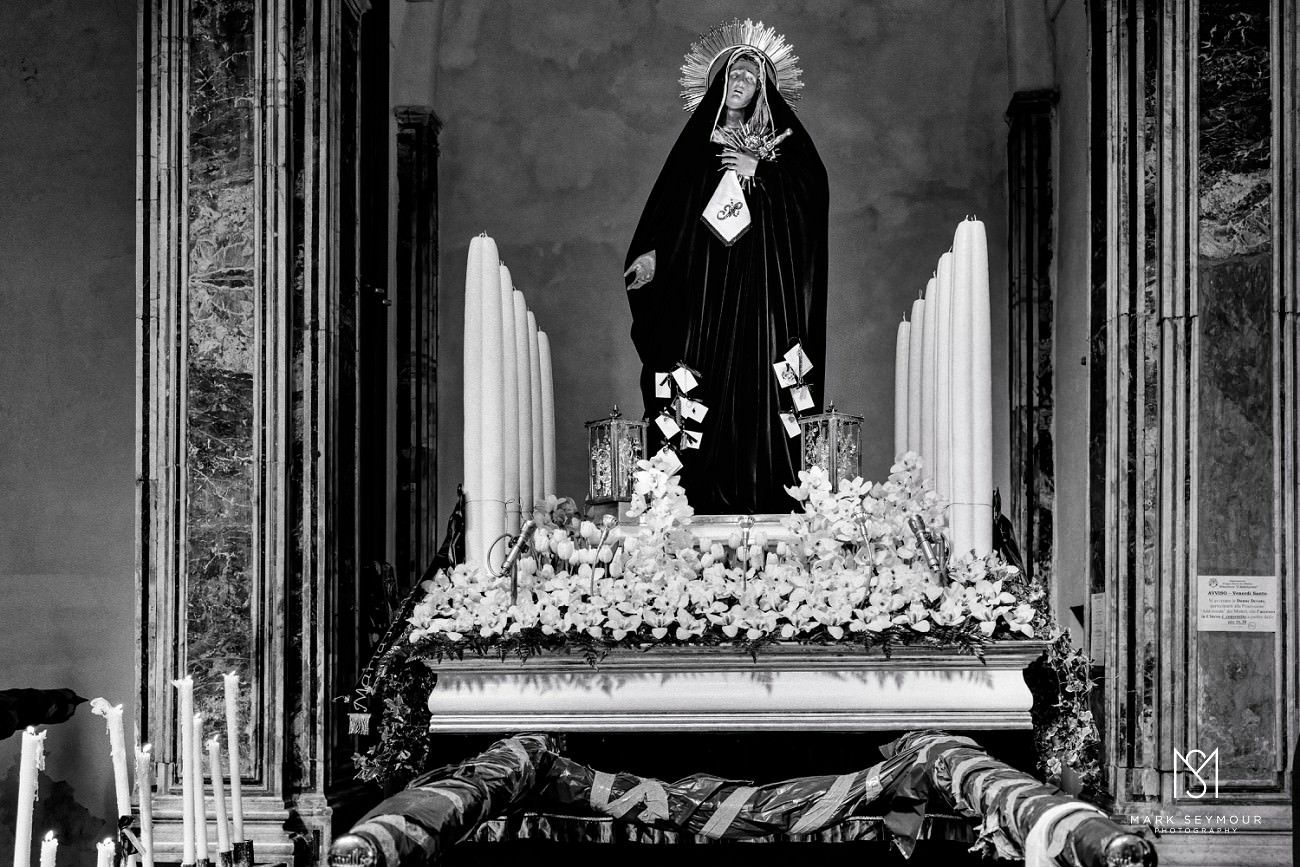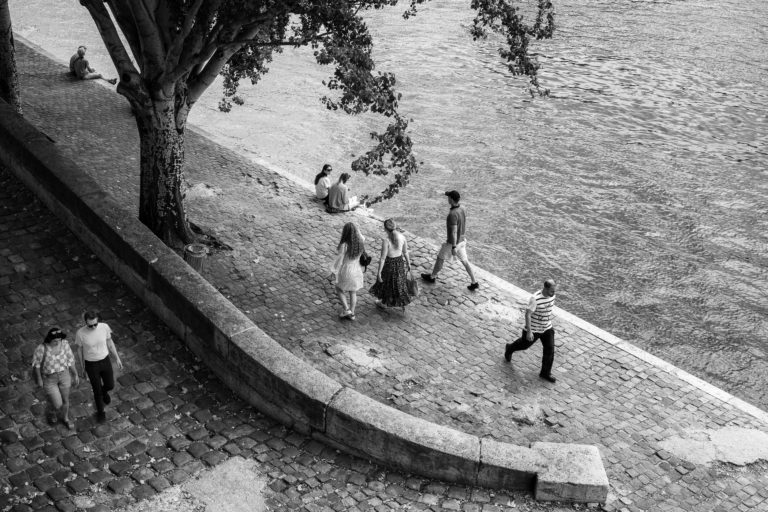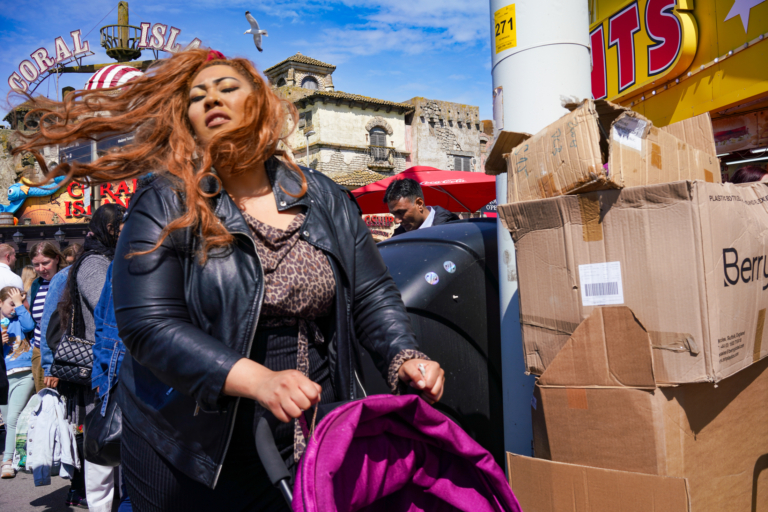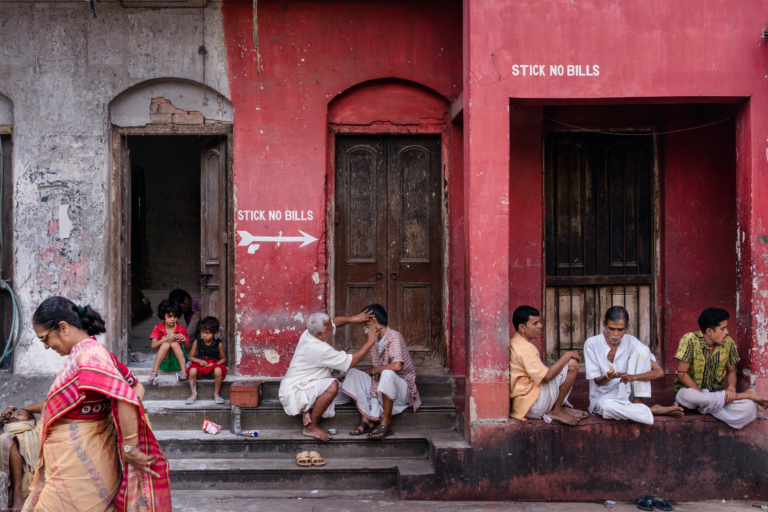There are many Easter celebrations that capture the imagination of photographers around the world, and none more so for me than the Misteri di Trapani which is where I take a group of photographers on my Easter photography workshop Trapani.
Trapani, Sicily:
Trapani is the capital of the Province of Trapani on the west coast of Sicily. Travel takes about twenty minutes from the local airport Trapani, reached via a short flight from Milan Linate, or about an hour drive from the Palermo airport which can be reached directly from most UK airports. With warm sunshine the pastel hues of the baroque buildings look beautiful and there are many interesting sights locally such as the famous Marsala region. Reaching out into the Mediterranean Sea, walk along the coastline and visit the busy port. Look out for the local coral jewellery and pottery shops and of course enjoy the amazing local wine and seafood in the many cafes and restaurants. It’s worth taking a cable car ride up Mount Erice on one day. The old train station, early morning fish market and the salt pans and windmills are also of interest to the travel photographer.
We stayed in the modern Hotel Vittoria, within a fifteen-minute walk of the old town and the heart of the procession. As a group I always ensure we have dinner one night at one of the most famous pizzeria restaurants in Sicily, Calvino, established in 1946, proper stone baked base, oozing with Gorgonzola and spicy salami perfect with an Italian beer.
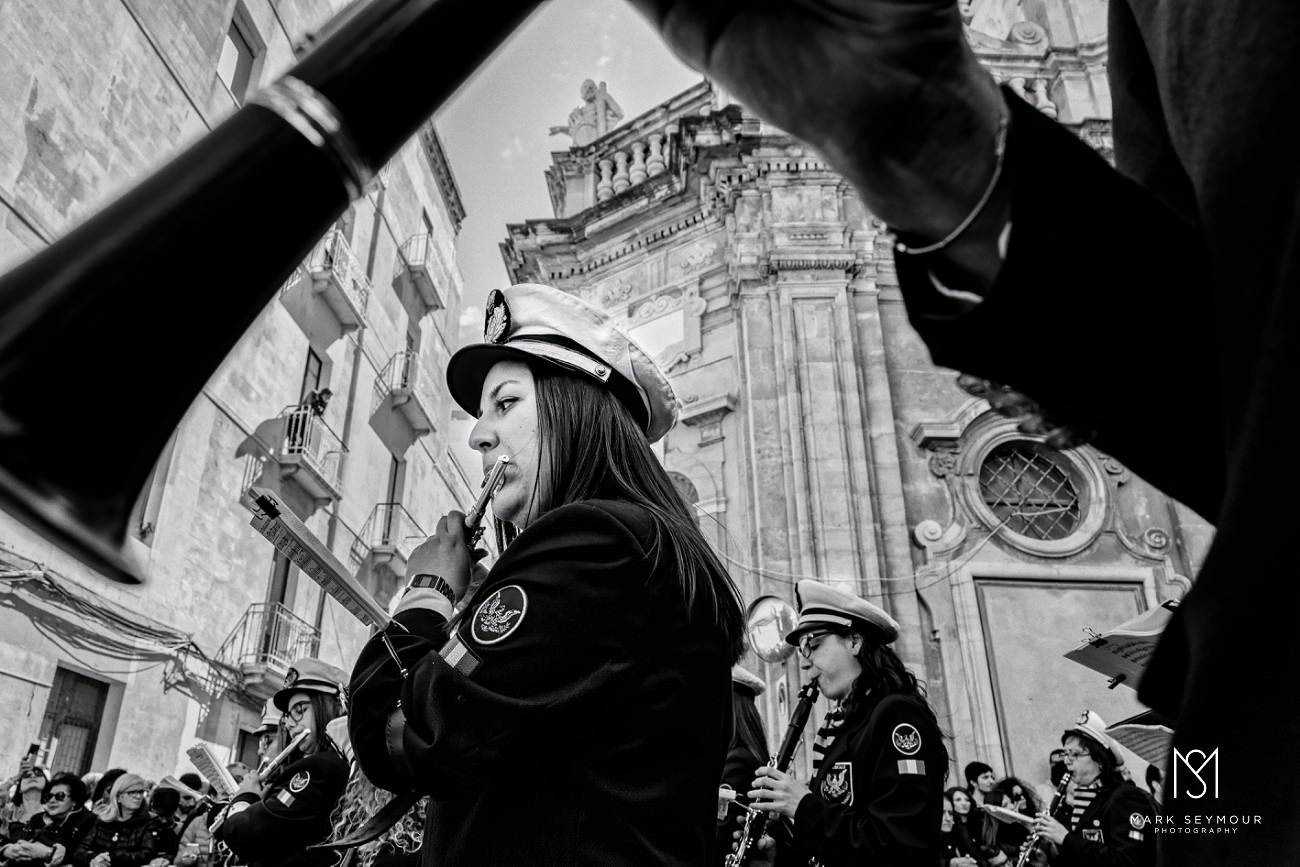
Trapani Easter Festival:
The Processione dei Misteri di Trapani, dates back to the sixteenth century and is the culmination of Holy Week, retelling the passions and death of Christ. Twenty elaborately carved wooden floats are carried through the streets of Trapani before returning to the church the following morning. Each float is the responsibility of one of the Guilds of Trapani including; fishermen, bakers, carpenters, and pasta makers. Each float is incredibly heavy and takes twenty men to carry and is accompanied by a band. The effort of the procession is to reflect the suffering endured by Christ.
Workshop:
The procession lasts around twenty-four hours, and this photography workshop Trapani, is a full-on experience over three days, so bring your camera, walking boots, and stamina!
The photography workshop Trapani starts on Holy Thursday at the hotel and we talk about how best to document the procession to capture the story of the event. We photograph the Guild’s and their families as they prepare the floats in the church, Chiesa del Purgatorio, adorning the carved figures with candles, flowers and silver. In the church we met with photographer Ernesto Bazan with his workshop group. Thursday is also an opportunity to walk some of the streets so that everyone can familiarise themselves with the route.
The many churches in Trapani hold services that start with the traditional washing of the feet. It is worth visiting the Cattedrale San Lorenzo, with many historic paintings including its own Caravaggio on the wall.
Thanks to a local photographer and a friend in the Carabinieri, we are very honoured to have fotografo and stampa passes which allow us in the church on Good Friday and allow us to walk alongside the floats as the process through the streets. This means we can really get up close to the action for our photography workshop Trapani.
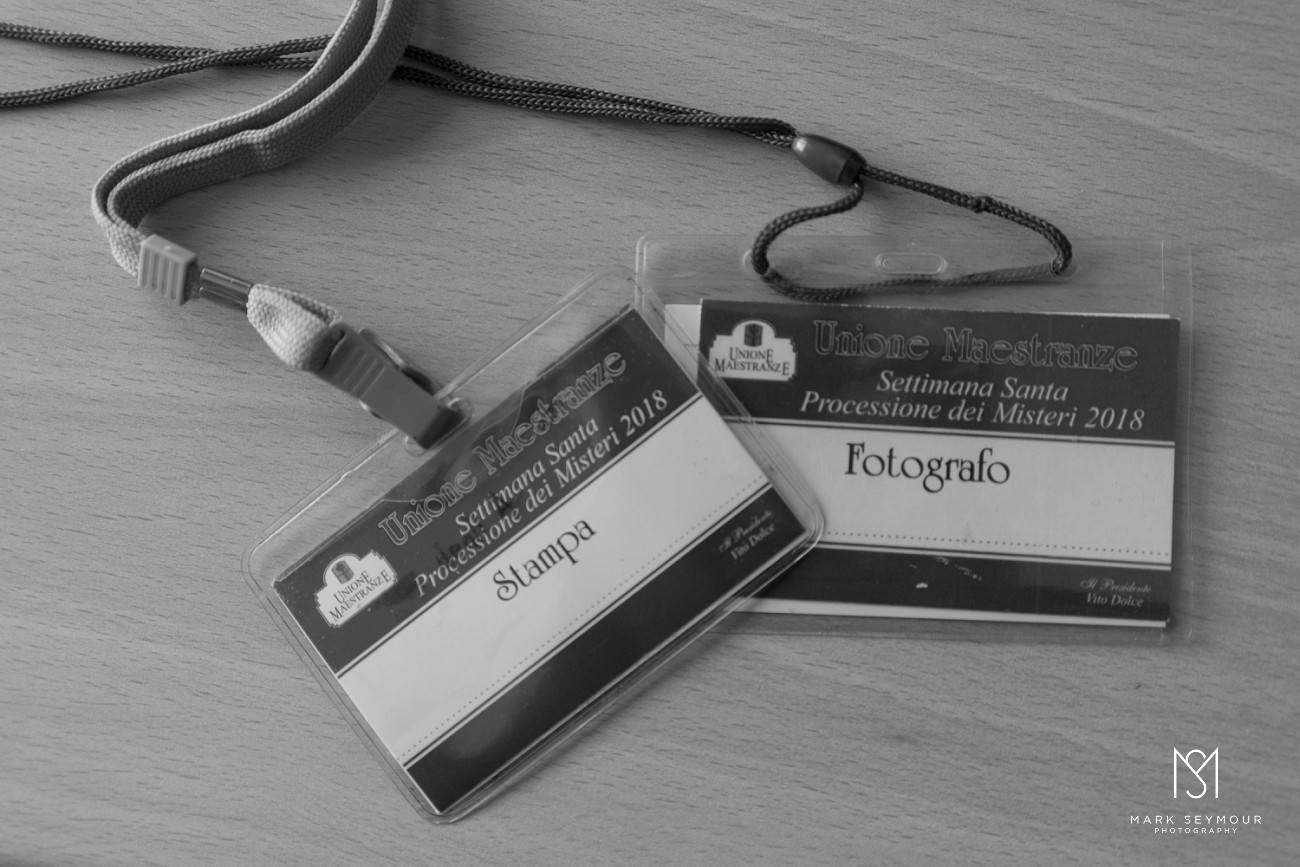
We return to the church at about 11 am on Good Friday and it is even busier with the floats receiving their final touches and those who would be carrying and escorting the floats in the church. The crowds take to line the streets and the doors to the church are closed during the last hour of preparations.
The procession begins at two o’clock outside with prayers before the church door is hit with the palm of the hand three times. Inside, two men are lifted up to unlock and open the door to cheers, and the loud clapping sound of the wooden clackers. As the doors open the first band is in position playing, the attendants walk out then the first float.
The bands play a solemn piece that creates a wall of sound in the narrow streets. The musicians and those walking ahead of each float repeat a rocking step which has a hypnotic rhythm and keeps the procession slowly walking through the streets as each band and float join in turn.
We remain within the church for the first few floats then make out way outside to photograph the floats as they make their way through the door and turn to take their place in the procession. We continue to photograph along the route before taking a well-earned break for dinner and rest.
The crowds are waiting for the float of the Madonna and by the time we re-join the procession, it is dark. The Madonna is positioned to look into either side of the street as they make their way slowly along the route, the priests praying and rose petals are cascaded from the balconies overhead.
In the narrow streets, the floats take on an atmospheric quality with the candle lights and shadows being cast upwards on the buildings.
The procession continues through the night, although the bands stop playing at midnight. We return to the hotel to sleep before going out early on Saturday morning to document the floats as they make their way back to the church.
The atmosphere is emotionally intense, there were smiles and hugs as people greet each other, but for many, the overwhelming responsibility of the procession brings moments of quiet reflection and tears. It is really important to steal your own emotions from the situation and record what you see, but it is not easy.
The photography workshop Trapani, is not just about being out on the streets photographing the procession, in the afternoon is spent editing our images; I took around 3000 over the three days; top tip 1 when you are going out to photograph an event like this you must take extra charged batteries and spare memory cards with you. The aim is to get 10-20 images that tell the story of Misteri di Trapani.
For me I edit my Trapani images in black and white as I feel is reflects the solemnity and emotions of the procession. I recommend photo mechanic for quick importing and identifying your best photographs, and then photoshop and silver efex for processing your images into high contrasting black and white images. Ultimately the images can then be put into a slideshow presentation accompanied by some of the procession music; top tip 2 taking all your photographs landscape will create a more professional looking slideshow.
After dinner, we have an open critique of the photographer’s work and complete this on the Sunday morning after breakfast. The critique is a very important part of the photography workshop Trapani, as everyone has the chance to share their images and learn from each other.
What do you need to get great documentary photography?
All the photographs I shot during the workshop were taken using the phenomenal Zeiss lenses 35mm F28, 18mm and 25mm Batis lens
For more information about the individual lenses visit the Zeiss website here
Workshops around the world;
Have you been inspired to join me on a photography workshop? We have many courses booking to develop your documentary photography through experiencing the real life of a county and it’s people, and of course, you can book for Easter 2019.
Here’s a taster of one of our photography workshops in Jodhpur, India.

